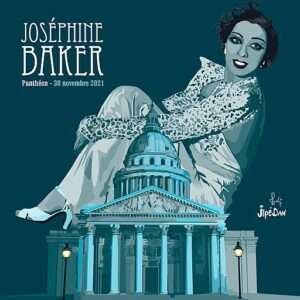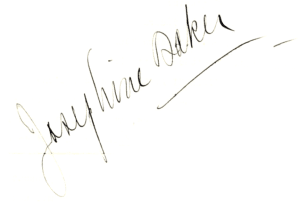|Josephine Baker a Journey to the Pantheon|
Josephine Baker, an iconic figure in the history of entertainment, holds a special place in the hearts of the French people. Her remarkable achievements, both on and off the stage, have solidified her legacy as a cultural ambassador, a civil rights activist and a symbol of resistance. In this article, we will delve into the extraordinary life of Josephine Baker and explore Baker’s connection to France, culminating in her posthumous induction into the Pantheon, the final resting place of France’s revered figures.

The Story of Josephine Baker
- Early Life: From St. Louis to the Parisian Stage
- The Belle Époque: Josephine Baker’s Rise to Fame
- The Exotic Sensation: Breaking Barriers and Inspiring Change
- A Voice for Equality: Josephine Baker’s Activism
- Josephine Baker and the French Resistance: A Heroine in War
- Legacy and Recognition: From the Pantheon to the Hearts of the French People
-
Early Life: From St. Louis to the Parisian Stage
Born on June 3, 1906, in St. Louis, Missouri, black woman Josephine Baker’s journey began in humble surroundings. Her early experiences as a dancer in the United States laid the foundation for her future success. However, it was her move to Paris in the 1920s that would truly shape her career and cement her bond with France.
-
The Belle Époque: Josephine Baker Rise to Fame in Paris
In the vibrant atmosphere of 1920s Paris, known as the Belle Époque, Josephine Baker flourished as an entertainer. Baker’s unique blend of charisma, talent, and provocative performances captivated audiences and propelled her to stardom. With her energetic dance routines and revealing costumes, she challenged societal norms as a black woman and became a sensation in the city of love.
-
The Exotic Sensation: Breaking Barriers and Inspiring Change
Josephine Baker’s impact extended far beyond her stage presence. As an African-American woman in a predominantly white society, she defied racial prejudices and shattered stereotypes. Her success not only paved the way for future generations of artists but also served as a catalyst for societal change in the black American and black history. She became a symbol of empowerment, celebrating diversity and challenging the status quo.
-
A Voice for Equality: Josephine Baker Activism
Driven by a deep sense of justice, Baker embraced activism throughout her life. She used her platform to advocate for civil rights and equality, both in the United States and France. Baker’s contributions to the fight against racial discrimination earned her recognition and respect, transcending the realm of entertainment.
-
Josephine Baker and the French Resistance: A Heroine in WW2
During World War II, Baker’s unwavering dedication to the French Resistance demonstrated her remarkable courage and commitment. She risked her life working as a spy, gathering intelligence for the resistance movement. Her bravery and unwavering resolve earned her numerous accolades, including the Croix de Guerre, France’s prestigious military honor.
-
Legacy and Recognition: From the Pantheon to the Hearts of the French People
As a black woman, Baker’s impact on French culture and society continues to resonate to this day. Her unwavering commitment to equality and her extraordinary contributions as an artist have left an indelible mark. In recognition of her remarkable achievements, she was posthumously inducted into the Pantheon, the prestigious mausoleum in Paris that houses the remains of France’s revered figures.
The induction into the Pantheon of this African American woman in November 2021 was a momentous occasion. It signified the profound respect and admiration that the French people hold for her. She became the first Black woman to be laid to rest in this revered monument, solidifying her place in history and further symbolizing the bond between Josephine Baker and France.

With this momentous recognition, she joins the ranks of other esteemed figures such as Victor Hugo, Marie Curie, and Voltaire. Her presence in the Pantheon serves as a reminder of her immense contributions to the arts, her fight against injustice, and her dedication to promoting harmony among diverse cultures.
Her legacy extends far beyond her artistic achievements. She will always be remembered as a trailblazer, a symbol of resilience, and a voice for equality. Her performances on stage and her tireless activism have inspired generations of artists, activists, and individuals alike.
Baker’s story is a testament to the power of determination and the ability to transcend boundaries. Through her artistry and unwavering spirit, she bridged cultural divides and advocated for a more inclusive world. Her legacy continues to inspire and her influence can be felt in the ongoing pursuit of social justice and equality.

Josephine Baker to the Pantheon in Paris
Josephine Baker, with her exceptional talent, indomitable spirit, and commitment to equality, left an indelible mark on France and the world. Her journey from St. Louis to the stages of Paris, her fight against racism and discrimination, and her role in the French Resistance during World War II exemplify her remarkable life.

From her groundbreaking performances in the Belle Époque to her posthumous induction into the Pantheon, her impact endures. She will forever be remembered as a cultural icon, a symbol of resistance, and a beacon of hope for generations to come.
Josephine Baker’s private tour guide
Come and see this African American woman, who was born in the United States during segregation. She left her country for the country of France. Discover the dancer, the singer, the artist, her work, her intercultural family, her military commitment for France as a spy, Freedom, her activism for civil rights. She and her husband adopted 12 children of different origins and cultures from Japan, Colombia, Finland, France, Algeria, Morocco, Ivory Coast and Venezuela, a family like she wanted. Movement geographically, within her arts and soul will give you a great insight of Paris. From Montmartre to the Pantheon, this black American woman has so much to teach us.
Emy,
FAQs (Frequently Asked Questions) about Josephine Baker
Was Josephine Baker born in France?
- No, she was born in St. Louis, Missouri, United States.
How did Josephine Baker become famous?
- She rose to fame through her energetic and provocative dance performances in 1920s Paris.
What is the Pantheon in France?
- The Pantheon is a mausoleum in Paris that serves as the final resting place for distinguished figures in French history.
Had Josephine Baker’s a role during World War II?
- Josephine Baker worked as a spy for the French Resistance during World War II, gathering intelligence against the Nazi regime.
What is Josephine Baker’s legacy?
- Josephine Baker’s legacy encompasses her contributions as an artist, activist, and symbol of resistance against discrimination and injustice.

